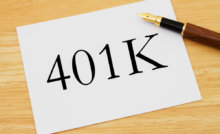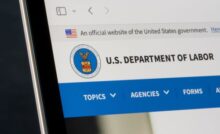Enhance Your Plan Audit Process
Offering an employee benefit plan (EBP) is a wonderful benefit for employees, but it comes with some responsibility. For plan sponsors that have at least 100 employees eligible to participate (whether all participate or not), an audit must be performed annually by an independent CPA firm. Whether the employee benefit plan is about to be audited for the first time or you have years of audits under your belt, there is always room for improvement. Proactively preparing for the plan audit will make the process run more smoothly for the audit firm, and more importantly, your department. To help clients, prospects and others enhance efficiency, Wilson Lewis has provided some important tips below.
Tip to Prepare for an EBP Audit
- Understand the plan. It’s important to start by understanding the provisions in your plan documents and adoption agreements. If you don’t know the details of your plan, it’s difficult to know if you are compliant. You should also know and be prepared to talk about plan changes, including amendments, any new investments, change in trustees or third-party administrators or new eligibility requirements that open the plan up to new employee groups.
- Get a list from your auditor. There are a number of steps that can be completed well before your audit starts to help maintain efficiencies during the process. For instance, review of internal controls and financial statement preparation can be performed well ahead of your plan audit. Your auditor should be able to provide a guide or checklist specifying what information they will need and in what format.
- Gather documents ahead of time. Getting ahead of the game with document gathering and prepping for questions the auditor may ask about the plan can help you avoid delays in the process and unnecessary stress. Generally, the auditor’s list will include things like:
-
- Executed plan documents and amendments (including adoption agreements)
- Spreadsheet templates to summarize plan activity
- Employee census report and payroll records
- Contributions from both employers and employees
- Current IRS determination or opinion letter
- Investment results
- Distribution of benefits and participant loans
- Payment of expenses
- Administrative committee and/or board minutes that pertain to the plan
- Trust and recordkeeping agreements with the plan custodian and record keeper
- Activity-level internal control narratives
- Proof of the plan’s ERISA fiduciary bond coverage
- Copies of prior 5500 filings
- Other significant agreements or correspondence related to the plan
- Organize your team. Schedule a meeting with all service providers, plan custodians, third-party administrators and any internal staff with involvement in the audit. Make sure everyone knows their role in the audit process, provide detail about the information they will be responsible for and create a timeline for delivery. Then meet regularly with the internal team and the auditors during and after the audit fieldwork is completed to keep the timeline moving and talk through any open requirements. This will ensure everything is handled in a timely fashion and facilitate the efficient completion of the audit.
- Learn from the process. After the final report has been issued, meet with your employee benefit plan team to debrief about what went well, what could be improved upon and what changes would help the process go more smoothly next year.
Contact Us
It’s clear that working with an experienced plan auditor has many benefits often experienced during the audit process itself. Often companies discover issues with their provider once the audit gets underway. If you have questions about your plan audit process or need assistance with the audit, Wilson Lewis can help. For additional information please call us at 770-476-1004, or click here to contact us. We look forward to speaking with you soon.
Recent Posts
Relief on Tap for Georgia Taxpayers
Earlier this month Georgia Governor Brian Kemp signed two important parcels of legislation into law.…
Preparing for an ERISA Audit
Preparing for an ERISA plan audit often starts with understanding what the audit looks for…
Auto Dealership Benchmarking
Atlanta car dealerships are constantly searching for ways to increase new and used car sales.…
Navigating New Auto Tariffs: What Dealerships Need to Know
On April 3, 2025, a new 25% tariff on imported vehicles went into effect, bringing…
Leukemia & Lymphoma Society Fundraiser
I want you to imagine hearing the three words, “You have cancer.” Sadly, this has…
Wilson Lewis Named a Regional Leader by Accounting Today
Atlanta accounting and advisory firm Wilson Lewis was honored this month as one the top…



